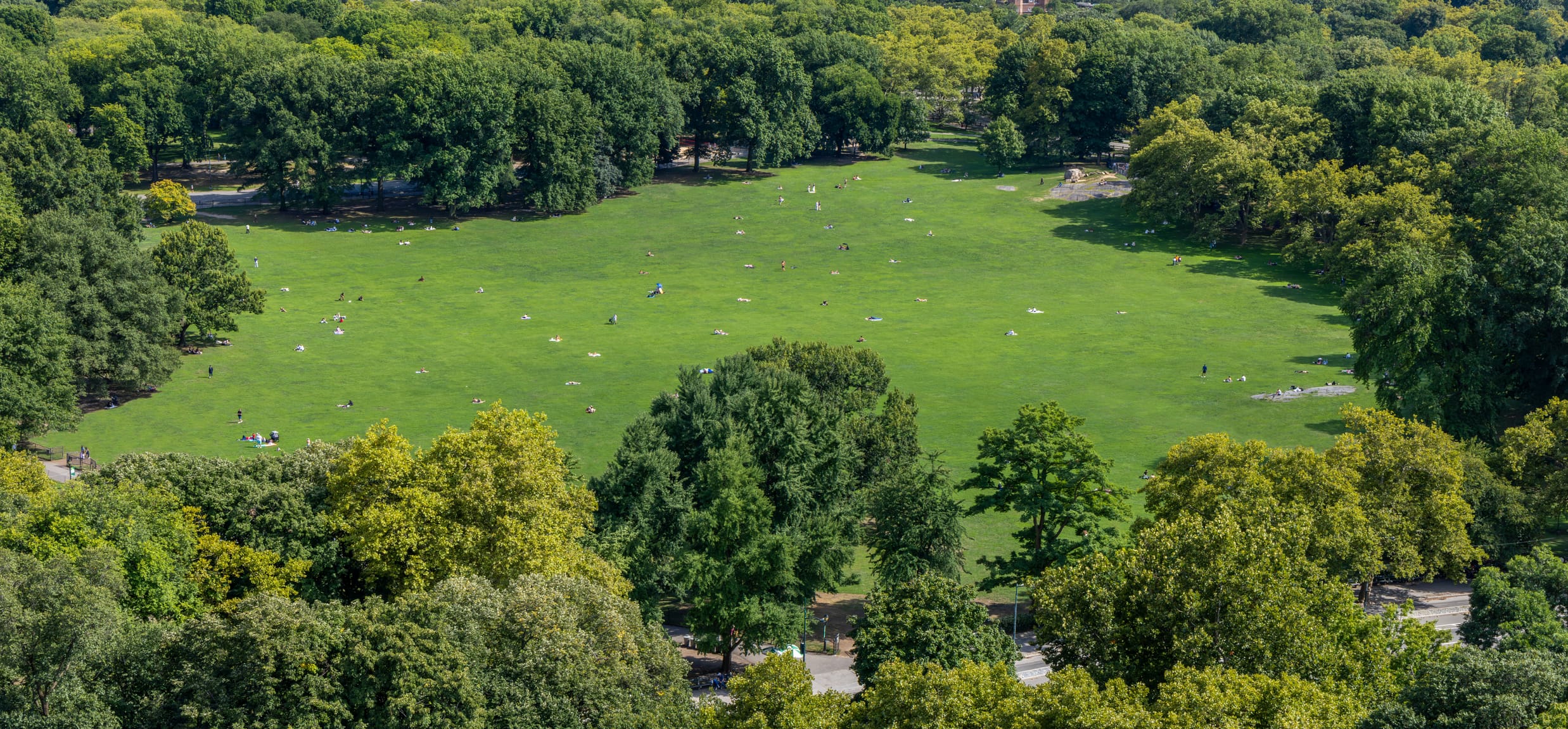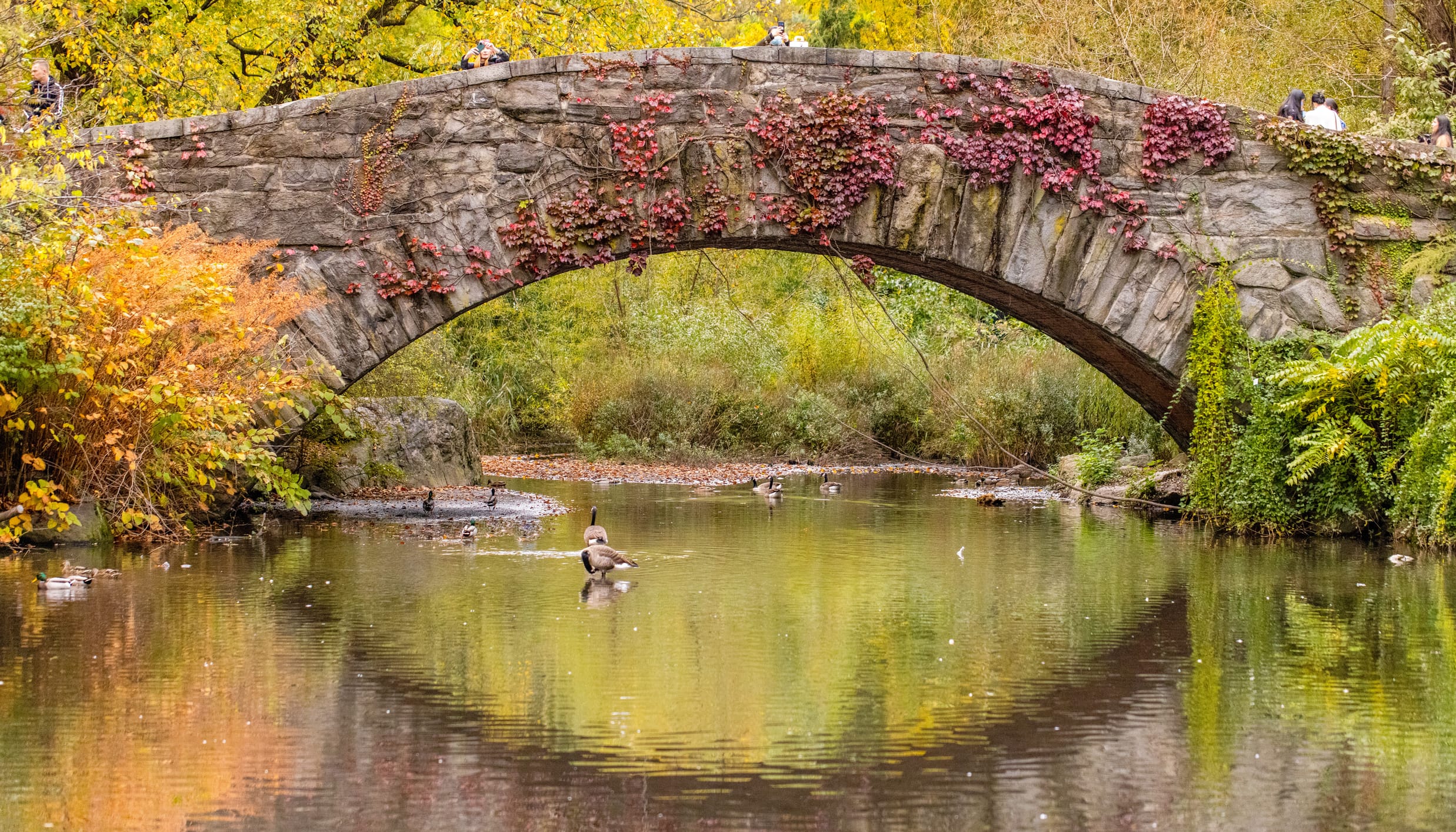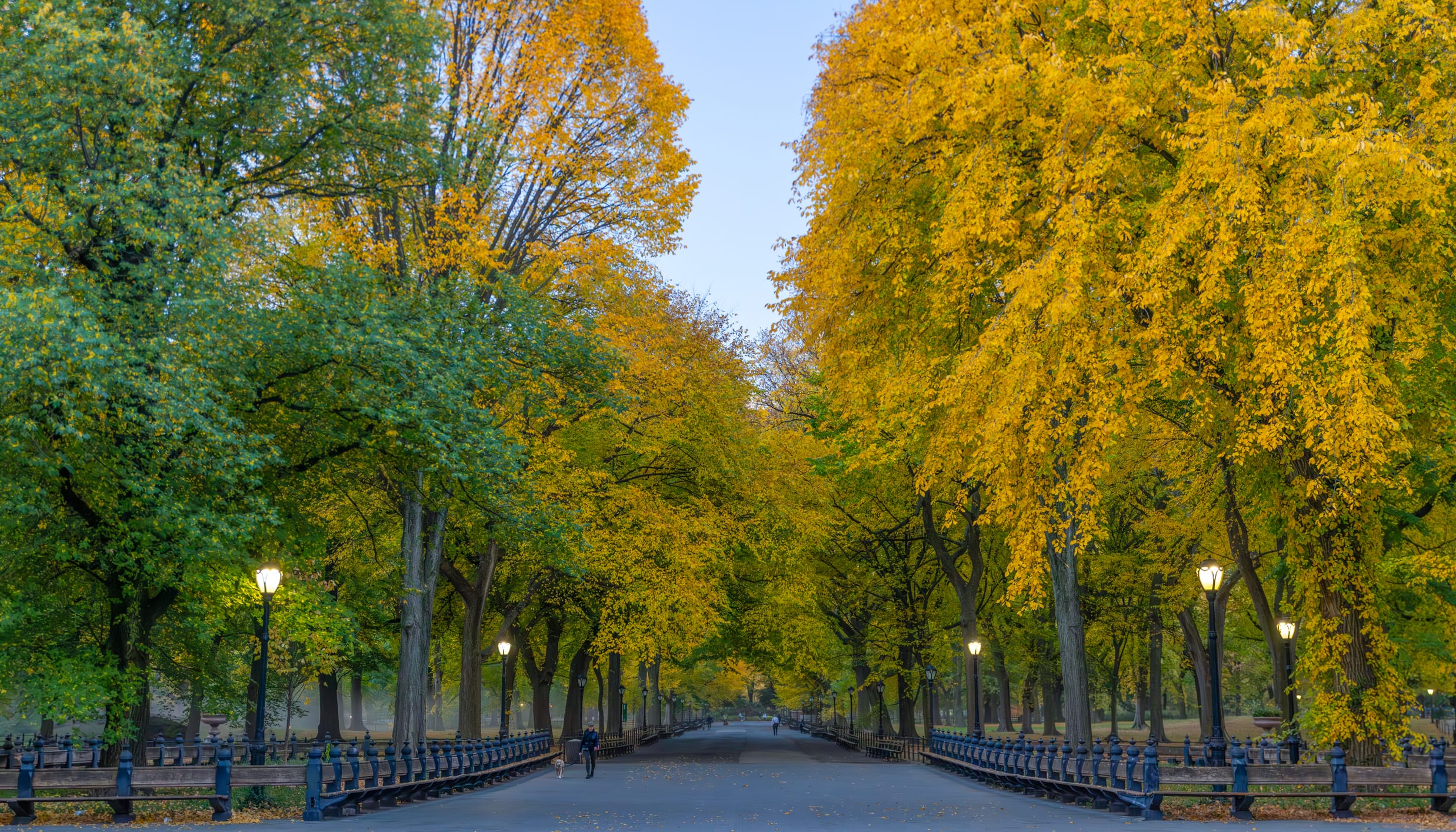
From a Park worth saving to a Park worth transforming.
Central Park was born from a bold vision—a democratic space of beauty, nature, and respite in the heart of New York City.
And the Central Park Conservancy was created to restore that vision, rescuing the Park from its long decline and turning it into one of the most iconic greenspaces in the world. For the last 45 years, the Conservancy has cared for all 843 acres—ensuring this place remains open, vibrant, and welcoming to all.
Now, urban parks everywhere are faced with new climate realities—reshaping the rhythms of seasons, the health of our trees, and the air we breathe—and threatening the safety and wellbeing of our communities.
These new challenges call for a new kind of care—it calls for resilience, innovation, and a renewed sense of purpose. It calls for transformative action.
Guiding Principles

Preserve the past, protect the future, empower the present.
Guided by principles that honor Central Park’s legacy, respond to the needs of today, and protect its future, the Conservancy is putting its values into action—and pushing environmental progress forward.
-

PROMOTE ENVIRONMENTAL PROGRESS AND HISTORICAL INTEGRITY
As stewards of a living landmark, we are committed to protecting the Park’s historic character while adapting to the challenges of a changing climate. -
DRIVE CHANGE WITH TRANSPARENCY AND ACCOUNTABILITY
By collecting and analyzing data, we gain a better understanding of the Park’s needs and can measure progress against our goals. -
CENTER PEOPLE IN THE PROCESS
From Park visitors and volunteers to staff and donors—everyone has a role to play. Working with experts, peers, and our neighbors strengthens our sustainability work through equity, inclusion, and community. -

INVEST IN THE CONSERVANCY TEAM
Investing in our staff through sustainability training, certifications, and professional development builds the skills and leadership essential to carrying this vital work forward.
Sustainability In Action
These initiatives reflect our commitment to measurable, lasting impact—advancing solutions to urgent climate challenges while shaping a Park that is more resilient, more inclusive, and better prepared to serve generations to come.
A Closer Look at our Progress

More than metrics, these numbers tell a story of purpose—a living record of stewardship in action. Together, they reflect how the Conservancy’s work safeguards the environment, preserves Central Park’s legacy, and enriches the visitor experience.

18,000+ trees stewarded
Our arborists care for 230+ tree species to keep this vital climate asset strong and resilient.

325 MT Carbon offset
Our trees absorb carbon and clean the air we all share.

7 Tons of Cleaner Air
The Park's trees naturally purify the air, protecting public health and the urban environment.

1,400 tons recycled*
Through daily waste management, our staff recover thousands of tons of plastic, glass, aluminum, cardboard, and more.

97% recycling increase*
Improved signage, staff training, and low-contamination waste streams have led to greater recycling success.

1,500+ pizza boxes recycled
Piloting four custom bins led to big results, reducing litter and inspiring adoption across the City.

90% electric fleet in service
By replacing gas-powered utility vehicles with electric ones, we embrace energy-efficient operations.

34 Buildings In Our Care
From historic icons to essential service facilities, every building is maintained with sustainability in mind.

9 Bodies of Water Protected
The lakes, ponds, and streams sustain biodiversity, manage stormwater, and support the Park as a refuge.
*Recycling rates shown here are compared against 2022 levels.
Explore Our Sustainability Map
Transforming The Park Together
Caring for Central Park is a collective effort—here's how you can protect and preserve this iconic landscape.
Partnerships That Power Progress
Through a collaboration with the World Monuments Fund, the Conservancy is launching a multifaceted initiative to safeguard the Park’s ecological, historical, and cultural legacy. This effort includes:
• Climate Risk assessment to model future environmental threats and guide long-term planning
• Biodiversity assessment to identify species at risk and strengthen ecological resilience
• Adaptation strategies to strengthen existing management practices through climate resilience measures
• Public engagements series to share the cultural and ecological significance of the Park with broader audiences
The Central Park Conservancy, in partnership with the Yale School of the Environment and the Natural Areas Conservancy—and with funding support from Delta—established the Central Park Climate Lab to confront one of the most pressing challenges of our time: climate change. This initiative examined both the threats climate change poses to urban parks and the critical role parkland plays in helping cities adapt and mitigate its effects.
Using Central Park as a living laboratory, the Climate Lab developed tools and methodologies to assess climate impacts, generating data that informed the Conservancy’s Environmental Sustainability Framework. What began as a groundbreaking collaboration now serves as the Conservancy’s dedicated research arm for sustainability, ensuring that Central Park—and urban parks worldwide—remain resilient, thriving landscapes for generations to come.

ENVIRONMENTAL SUSTAINABILITY FRAMEWORK
See how the Conservancy is formalizing and expanding its commitment to sustainability and resilience in Central Park and New York City—ensuring the Park remains a resilient, inclusive, and inspiring greenspace for generations to come.















